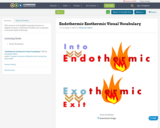
This resource is for English Language Learners or English Learners to help them visualize new vocabulary to increase depth of learning.
- Subject:
- Physical Science
- Material Type:
- Diagram/Illustration
- Date Added:
- 07/11/2017

This resource is for English Language Learners or English Learners to help them visualize new vocabulary to increase depth of learning.
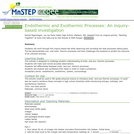
This inquiry-based lab will allow students to investigate endothermic and exothermic processes with everyday materials and predict the outcome of experiment based on their findings.
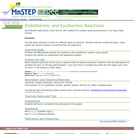
This activity is a lab investigation where students collect data concerning and endothermic and exothermic reaction.

Students use Google Earth to analyze oil consumption per capita in the US and around the world. Students then use spreadsheets to create graphs and calculate statistics regarding per capita energy use among various categories.
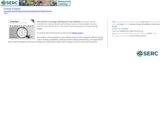
This activity is a learning game in which student teams are each assigned a different energy source. Working cooperatively, students use their reading, brainstorming, and organizational skills to hide the identity of their team's energy source while trying to guess which energy sources the other teams represent.
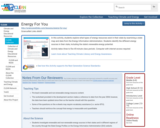
In this activity, students explore what types of energy resources exist in their state by examining a state map and data from the Energy Information Administration. Students identify the different energy sources in their state, including the state's renewable energy potential.
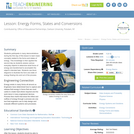
The students participate in many demonstrations during the first day of this lesson to learn basic concepts related to the forms and states of energy. This knowledge is then applied the second day as they assess various everyday objects to determine what forms of energy are transformed to accomplish the object's intended task. The students use block diagrams to illustrate the form and state of energy flowing into and out of the process.
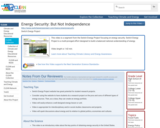
This video is a segment from the Switch Energy Project focusing on energy security. Switch Energy Project is a multi-pronged effort designed to build a balanced national understanding of energy.
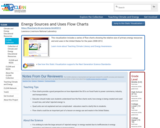
This visualization includes a series of flow charts showing the relative size of primary energy resources and end uses in the United States for the years 2008-2012.

This brief instructor-facilitated activity asks students to observe a simple demonstration, record their observations, and apply their knowledge to other conditions. It was written by Johnathan Hugh Broome from University of Southern Mississippi.
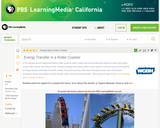
In this lesson designed to enhance literacy skills, students examine energy forms in moving objects and discover how changes from one form to another move cars through a roller coaster ride.

On NOVA, a team of carpenters, timber framers, engineers, and historians recreate a medieval throwing machine called a trebuchet. This adapted video segment explores how understanding energy transfer informs their design.

This lab is designed to help students understand the nanoscale effect of various energy inputs on the crystal lattice of a smart material, Nitinol.
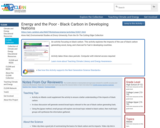
An activity focusing on black carbon. This activity explores the impacts of the use of black carbon generating wood, dung, and charcoal for fuel in developing countries.
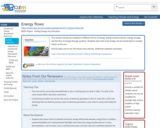
This activity introduces students to different forms of energy, energy transformations, energy storage, and the flow of energy through systems. Students learn that most energy can be traced back to nuclear fusion on the sun.
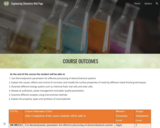
This course is a prerequisite course for Engineering
Target Audience: This course is intended for Engineering Students.
Learning outcomes:
• Students will be able to demonstrate electrochemical Cells.
• Explain the types of corrosion
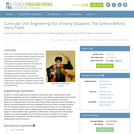
Under the "The Science Behind Harry Potter" theme, a succession of diverse complex scientific topics are presented to students through direct immersive interaction. Student interest is piqued by the incorporation of popular culture into the classroom via a series of interactive, hands-on Harry Potter/movie-themed lessons and activities. They learn about the basics of acid/base chemistry (invisible ink), genetics and trait prediction (parseltongue trait in families), and force and projectile motion (motion of the thrown remembrall). In each lesson and activity, students are also made aware of the engineering connections to these fields of scientific study.
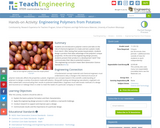
Students are introduced to polymer science and take on the role of chemical engineers to create and test a plastic made from starch. After testing their potato-based plastic, students design a product that takes advantage of the polymer’s unique properties. At the end of the engineering design process, students present their product in a development “pitch” that communicates their idea to potential investors.
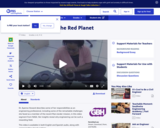
In this video segment from NASA, robotics researcher Ayanna Howard uses engineering to improve the intelligence of robots in space exploration.
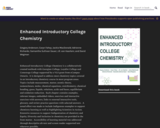
Short Description:
Enhanced Introductory College Chemistry is a collaboratively created textbook with Georgian College, Loyalist College and Conestoga College supported by a VLS grant from eCampus Ontario. It is designed to address most chemistry topics covered in an introductory chemistry course in most program areas. Topics include measurement, matter, atomic theory, nomenclature, moles, chemical equations, stoichiometry, chemical bonding, gases, liquids, solutions, acids and bases, equilibrium and oxidation-reduction. Each chapter contains examples, relevant images, embedded videos, exercises and interactive exercises with answers, links to external interactive tools, glossary, and review practice questions with selected answers. A noted effort was made to include Indigenous examples to support chemistry learning as well as highlighting Scientists in Action. Extensive resources to support Indigenization of chemistry and Equity, Diversity and Inclusion in chemistry are provided in the front matter. Accessibility of learning material was addressed through descriptive alt-text and screen reader supported text wherever possible. NewParaAdditional resources of image banks for faculty are also available. Authors of this book will use portions of it for introductory chemistry courses in Biotechnology, Environmental Science, College and Career Preparation and Pre-Health Science programs.NewParaPublication date: February 28, 2023
Word Count: 317204
(Note: This resource's metadata has been created automatically by reformatting and/or combining the information that the author initially provided as part of a bulk import process.)